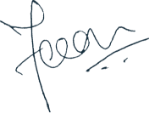Is the future of books phygital?

When Michelin Star chef Vikas Khanna released his Sacred Foods of India on June 22, 2022, it was the first phygital (physical plus digital) book ever published. Only two physical copies with NFTs were made and each was sold for $50,000 – one in Dubai and one in New York. The books came in a pure sandalwood box, which requires official Indian government certification.
Another 200 copies are available in Maplewood boxes adorned with gemstones and crystals and are sold via Akshaya.io (the cost depends on the value of Etherium). The books are printed on paper acquired from “special sources” in Italy, meant to last for generations, vegetable glue has been used, and the ink is sourced from Japan.
So, what exactly is a phygital book? For the lay person, let me unwrap what is a non-fungible token (NFT) and what NFT means for a book. Fungibility is the property of being exchangeable for other assets of the same kind without any change in value or usability. For instance, a US dollar is fungible, because, at a given point in time, you could exchange any one dollar for any other, and your new dollar would have the same value and usability as the one you traded. The NFT is simply a record of who owns a unique piece of digital content and hence cannot be exchanged. That content can be art, music, books, graphics, tweets, memes, games — you name it.
As a fan of physical books, I have often wondered how anyone could ever own a digital book. When you buy a book on Kindle, you don’t own the copy. Even a first edition or a signed book online is so easy to copy or share. Also, if the platform (say Amazon) ceases to exist, so will your digital book. That’s where NFTs can help to make a book unique and provide an equivalent of a certificate of authentication in a digital world. Of course, since it is expensive to mint an NFT, one would only do it for a rare book.
Once you buy an NFT, it becomes your legal property. It’s more secure than a typical digital transaction because the records are kept in blockchain, which offers a public record that cannot be hacked or therefore pirated. However, the biggest advantage I see in an NFT for a book is when reselling a rare book. In the secondhand book trading industry, the royalty of the second sale never reaches the author. If we include smart contracts in the NFT, authors and other involved parties can continue to reap a smaller percentage of royalties on those resales, forever.
We now have an answer to owning first editions, special editions or signed copies in the digital world, but its biggest downside is the environmental cost. Whenever a new NFT is minted, it requires huge computing power which in turn costs a lot of energy. But like with every technology, over time, if NFTs become a commodity, we may see a surge in its usage. For now, NFTs will be particularly useful for high end, branded luxury items (eg. if you want to ensure that your Versace handbag is not a duplicate from China, NFT is the way to go). And for a digital native generation, a digital product is as real as a physical one!
The best version of a book, one that will satisfy all kinds of book lovers, seems to be the phygital copy – both the physical and digital NFT.

